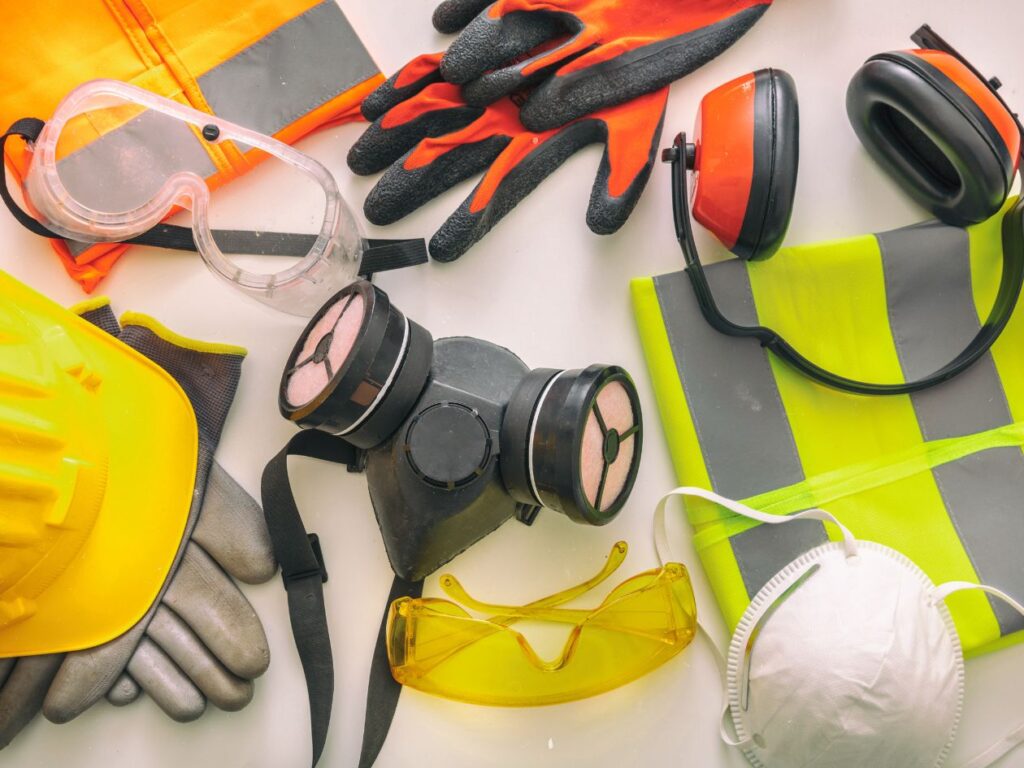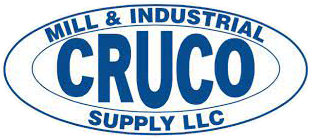Safety First: Essential PPE and Safety Supplies Every Industrial Workplace Needs

Industrial workplaces present unique safety challenges that require comprehensive protection strategies and high-quality safety equipment. From manufacturing floors to oil and gas facilities, automotive plants to general fabrication shops, maintaining a safe work environment isn’t just a regulatory requirement—it’s a fundamental responsibility that protects workers and ensures operational continuity.
Understanding the essential personal protective equipment (PPE) and safety supplies needed for industrial operations is crucial for creating effective safety programs. This comprehensive guide examines the critical safety equipment every industrial workplace should have, helping safety managers and facility operators make informed decisions about protecting their workforce.
Understanding Industrial Safety Requirements
Industrial safety regulations are complex and vary by industry, but certain fundamental principles apply across all sectors. The Occupational Safety and Health Administration (OSHA) establishes minimum safety standards, while industry-specific regulations may impose additional requirements.
Hierarchy of Controls Effective industrial safety follows the hierarchy of controls: elimination, substitution, engineering controls, administrative controls, and personal protective equipment. While PPE is the last line of defense, it remains essential when other controls cannot completely eliminate hazards.
Risk Assessment Foundation Every industrial workplace requires thorough hazard identification and risk assessment. This process identifies potential dangers, evaluates their severity and likelihood, and determines appropriate protective measures. Regular reassessment ensures that safety measures remain current and effective.
Regulatory Compliance Manufacturing, automotive, oil and gas, and fabrication industries must comply with various safety regulations. Understanding these requirements helps ensure that safety programs meet or exceed minimum standards while protecting workers from industry-specific hazards.
Head Protection: The Foundation of Industrial Safety
Head injuries can be catastrophic in industrial environments, making proper head protection essential for all workers exposed to overhead hazards, falling objects, or electrical risks.
Hard Hats and Safety Helmets Traditional hard hats remain the standard for most industrial applications, providing protection against impact and penetration. Modern safety helmets offer enhanced protection with improved comfort and additional features like integrated communication systems or lighting.
Specialized Head Protection Certain applications require specialized head protection. Electrical work demands dielectric hard hats, while confined space operations may require helmets with integrated ventilation systems. Welding applications need helmets with appropriate shade ratings and side protection.
Selection Criteria Proper head protection selection considers impact resistance, electrical properties, chemical compatibility, and comfort factors. Regular inspection and replacement programs ensure continued protection throughout the equipment’s service life.
Eye and Face Protection: Safeguarding Vision
Industrial environments present numerous threats to eye and face safety, from flying particles and chemical splashes to radiation exposure and impact hazards.
Safety Glasses and Goggles Safety glasses provide basic protection against impact and debris, while safety goggles offer superior protection against chemical splashes and dust. Anti-fog coatings and prescription lens options ensure clear vision without compromising protection.
Face Shields and Welding Helmets Face shields protect the entire face from chemical splashes, heat, and impact while allowing clear vision. Welding helmets provide specialized protection against arc radiation and molten metal splatter, with auto-darkening features improving productivity and safety.
Specialized Eye Protection Laser safety glasses, chemical-resistant goggles, and high-temperature face shields address specific industrial hazards. Proper selection requires understanding the specific threats present in each work environment.
Respiratory Protection: Breathing Safely
Industrial environments often contain airborne contaminants that can cause immediate harm or long-term health effects. Proper respiratory protection is essential for maintaining worker health and productivity.
Filtering Facepiece Respirators Disposable respirators provide protection against particulates and are suitable for many industrial applications. N95, P100, and other ratings indicate filtration efficiency and resistance to oil-based particles.
Half-Face and Full-Face Respirators Reusable respirators with replaceable cartridges offer protection against specific contaminants. Full-face respirators provide additional eye and face protection while ensuring a secure seal for maximum protection.
Powered Air-Purifying Respirators (PAPR) PAPR systems provide positive pressure protection and reduced breathing resistance, making them ideal for extended use or workers who cannot achieve proper fit with traditional respirators.
Supplied-Air Systems Confined space work and environments with oxygen deficiency require supplied-air respirators or self-contained breathing apparatus (SCBA). These systems provide clean air from external sources or self-contained supplies.
Hand and Arm Protection: Maintaining Dexterity While Staying Safe
Hands and arms are frequently exposed to cuts, burns, chemicals, and impact hazards in industrial settings. Proper hand protection must balance protection with dexterity and comfort.
Cut-Resistant Gloves Modern cut-resistant gloves use advanced materials like UHMWPE and glass fibers to provide excellent protection while maintaining flexibility. ANSI cut levels help identify appropriate protection levels for specific applications.
Chemical-Resistant Gloves Chemical handling requires gloves made from appropriate materials that resist permeation and degradation. Nitrile, neoprene, and specialized polymer gloves offer protection against different chemical families.
Heat and Flame-Resistant Gloves Welding, foundry work, and other high-temperature applications require gloves that resist heat and flame while providing adequate dexterity. Leather, aramid fibers, and specialized synthetic materials offer various levels of thermal protection.
Mechanical Protection Impact-resistant gloves protect against crushing and pinching hazards while maintaining grip and dexterity. These gloves often combine multiple protection features for comprehensive hand safety.
Hearing Protection: Preserving Long-Term Health
Industrial noise exposure can cause permanent hearing damage and affects worker communication and safety awareness. Proper hearing protection is essential in noisy industrial environments.
Earplugs and Earmuffs Disposable foam earplugs provide basic protection for most industrial noise levels. Reusable earplugs offer consistent protection with proper fitting. Earmuffs provide excellent protection and are easily donned and doffed.
Electronic Hearing Protection Advanced hearing protection systems amplify safe sounds while blocking harmful noise levels. These systems improve communication and situational awareness while protecting hearing.
Custom-Fit Options Custom-molded earplugs provide superior comfort and protection for workers with regular exposure to industrial noise. These devices offer consistent fit and long-term durability.
Foot Protection: Standing on Solid Ground
Industrial foot injuries can result from impact, compression, punctures, electrical hazards, and chemical exposure. Proper safety footwear provides essential protection while maintaining comfort during long work shifts.
Safety Shoes and Boots Steel-toe, composite-toe, and aluminum-toe safety footwear protect against impact and compression hazards. Different toe materials offer varying levels of protection and comfort characteristics.
Specialized Footwear Electrical hazard boots protect against electrical shock, while chemical-resistant boots prevent contamination and chemical burns. Metatarsal guards provide additional protection for the upper foot.
Sole Protection Puncture-resistant soles protect against sharp objects, while slip-resistant outsoles prevent falls on wet or oily surfaces. Anti-fatigue features improve comfort during extended standing and walking.
Body Protection: Comprehensive Coverage
Industrial work often requires full-body protection against various hazards including chemicals, heat, cuts, and impact.
High-Visibility Clothing Reflective vests and clothing ensure worker visibility in low-light conditions and around mobile equipment. Different classes of high-visibility clothing provide appropriate protection for various work environments.
Chemical-Resistant Clothing Tyvek suits, PVC aprons, and other chemical-resistant garments protect against splashes and contamination. Proper selection depends on the specific chemicals present and exposure scenarios.
Flame-Resistant Clothing Arc-rated clothing protects against electrical flash hazards, while flame-resistant clothing prevents ignition and reduces burn injuries. These garments are essential in environments with fire or explosion risks.
Cut and Puncture Protection Cut-resistant sleeves and aprons protect against blade and sharp object hazards. These garments often combine multiple protection features for comprehensive safety coverage.
Fall Protection: Working at Height Safely
Working at elevated positions requires comprehensive fall protection systems to prevent serious injuries and fatalities.
Full-Body Harnesses Properly fitted full-body harnesses distribute fall forces across the body and provide attachment points for fall arrest systems. Comfort features encourage consistent use during extended work periods.
Lanyards and Shock Absorbers Various lanyard types provide different levels of mobility and protection. Shock-absorbing lanyards reduce fall arrest forces, while retractable lanyards offer greater mobility with constant protection.
Anchor Points and Lifelines Proper anchor points and horizontal lifelines provide secure attachment for fall protection systems. Temporary and permanent systems accommodate different work requirements and configurations.
Emergency Response Equipment: Preparing for the Unexpected
Emergency response equipment enables quick action during accidents and medical emergencies, potentially saving lives and minimizing injuries.
First Aid Supplies Comprehensive first aid kits should be readily accessible throughout industrial facilities. Burn treatments, eye wash supplies, and trauma care materials address common industrial injuries.
Emergency Eye Wash and Shower Stations Chemical exposure requires immediate flushing with clean water. Emergency eye wash stations and safety showers provide critical first aid for chemical burns and contamination.
Spill Response Materials Absorbent materials, neutralizing agents, and containment equipment help manage chemical spills and prevent environmental contamination. Quick response can prevent minor incidents from becoming major emergencies.
Safety Equipment Maintenance and Training
Even the best safety equipment is ineffective without proper maintenance and training programs.
Regular Inspection Programs Daily equipment inspections identify damage or wear that could compromise protection. Formal inspection programs ensure consistent evaluation and timely replacement of damaged equipment.
Proper Fit Testing Respirators and other close-fitting equipment require proper fit testing to ensure effectiveness. Annual fit testing and training programs maintain protection standards.
Training and Education Workers must understand proper equipment selection, use, and maintenance. Regular training programs ensure that safety equipment provides intended protection.
Building a Comprehensive Safety Program
Effective industrial safety programs integrate multiple elements to create comprehensive worker protection.
Safety Culture Development Strong safety cultures encourage reporting, continuous improvement, and personal responsibility for safety. Leadership commitment and worker engagement are essential for program success.
Hazard Communication Proper labeling, safety data sheets, and training ensure that workers understand the hazards they face and appropriate protective measures. Communication systems must be accessible and understandable.
Continuous Improvement Regular program evaluation and improvement ensure that safety measures remain effective and current. Incident investigation and near-miss reporting provide valuable feedback for program enhancement.
Cost-Effective Safety Solutions
Investing in quality safety equipment provides long-term value through reduced injuries, lower insurance costs, and improved productivity.
Total Cost of Ownership Quality safety equipment may have higher initial costs but provides better protection and longer service life. Reduced injury costs and improved productivity often justify higher equipment investments.
Volume Purchasing and Inventory Management Bulk purchasing and strategic inventory management can reduce safety equipment costs while ensuring availability. Working with suppliers who understand industrial safety requirements helps optimize procurement strategies.
Standardization Benefits Standardizing safety equipment across facilities reduces training requirements, simplifies maintenance, and can provide cost savings through volume purchasing.
Staying Current with Safety Standards
Safety standards and regulations continue to evolve, requiring ongoing attention to maintain compliance and effectiveness.
Regulatory Updates OSHA and industry-specific regulations are regularly updated to address new hazards and improve protection standards. Staying informed about regulatory changes ensures continued compliance.
Technology Advances New materials and technologies continuously improve safety equipment performance and comfort. Evaluating new products and technologies can enhance worker protection and acceptance.
Industry Best Practices Learning from industry experiences and best practices helps identify opportunities for safety program improvement. Professional associations and safety organizations provide valuable resources and networking opportunities.
Creating a Safer Industrial Future
Comprehensive safety programs protect workers while supporting operational excellence and regulatory compliance. By understanding essential PPE and safety supplies, industrial facilities can create effective protection strategies that safeguard their most valuable asset—their workforce.
The investment in proper safety equipment and programs pays dividends through reduced injuries, improved productivity, and enhanced workplace morale. Quality safety supplies, combined with effective training and management commitment, create the foundation for sustained industrial safety success.
For guidance on selecting appropriate PPE and safety supplies for your industrial workplace, contact Cruco Supply and Industry. Our team can help you develop comprehensive safety solutions that protect your workers while meeting regulatory requirements and operational needs.
